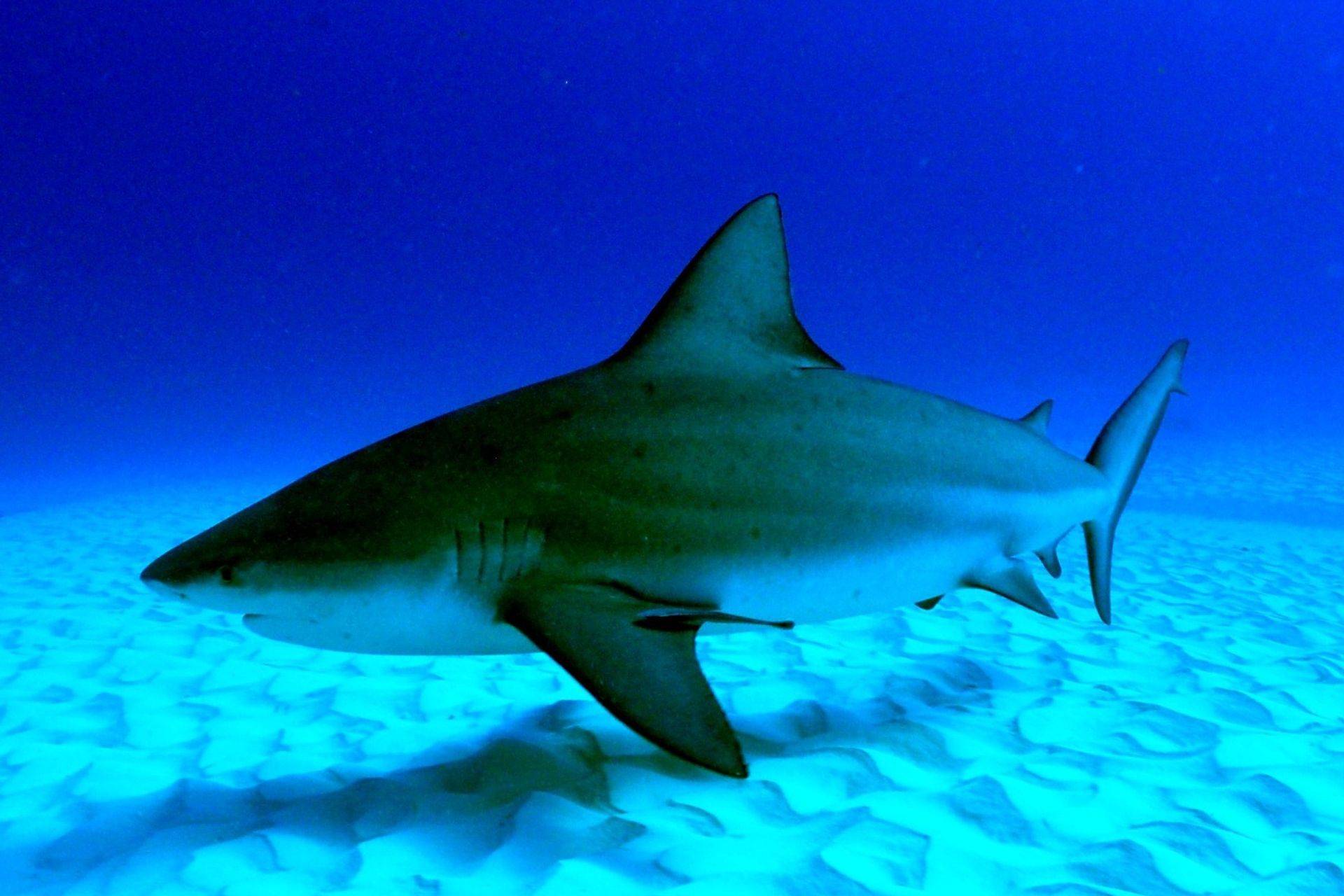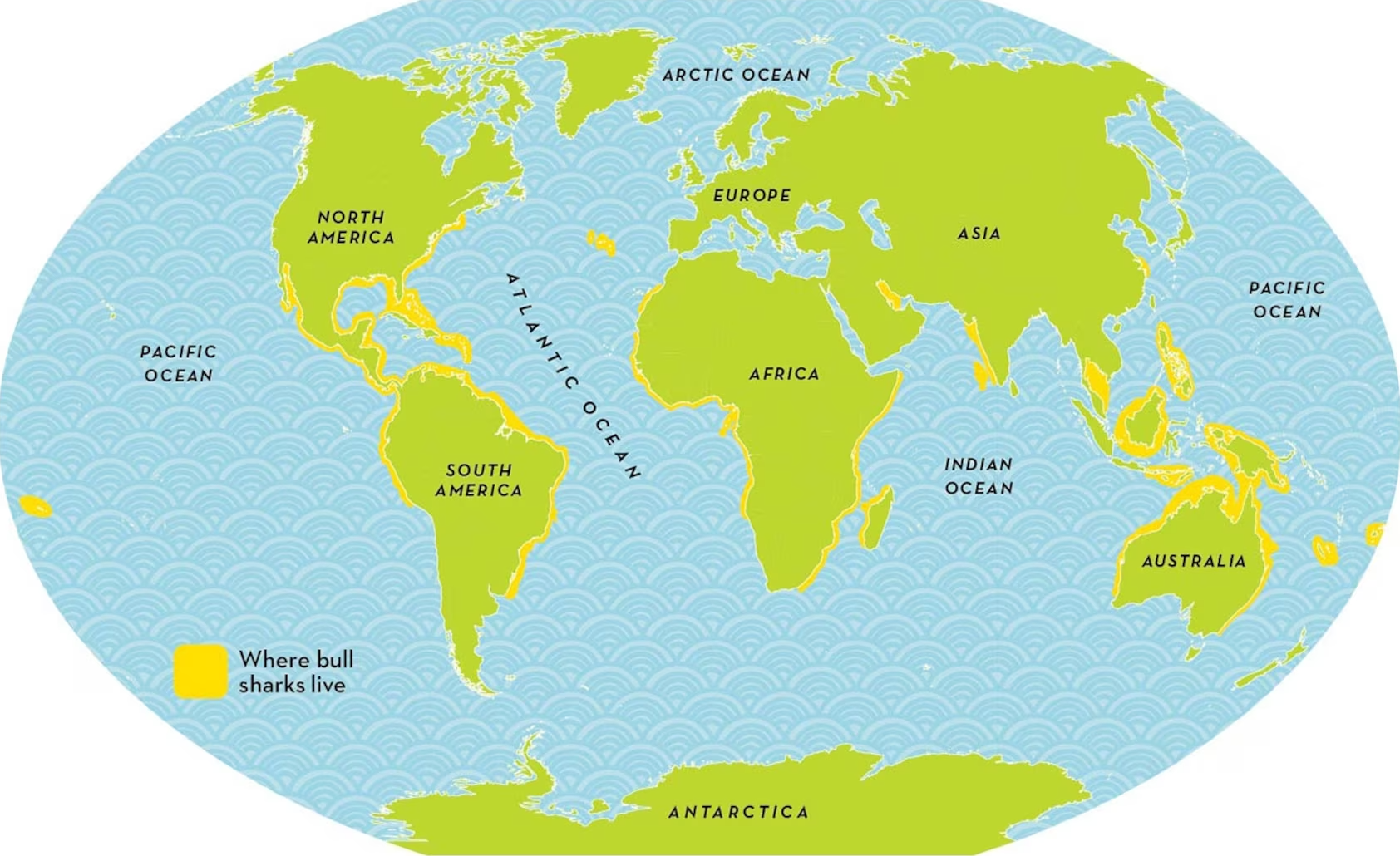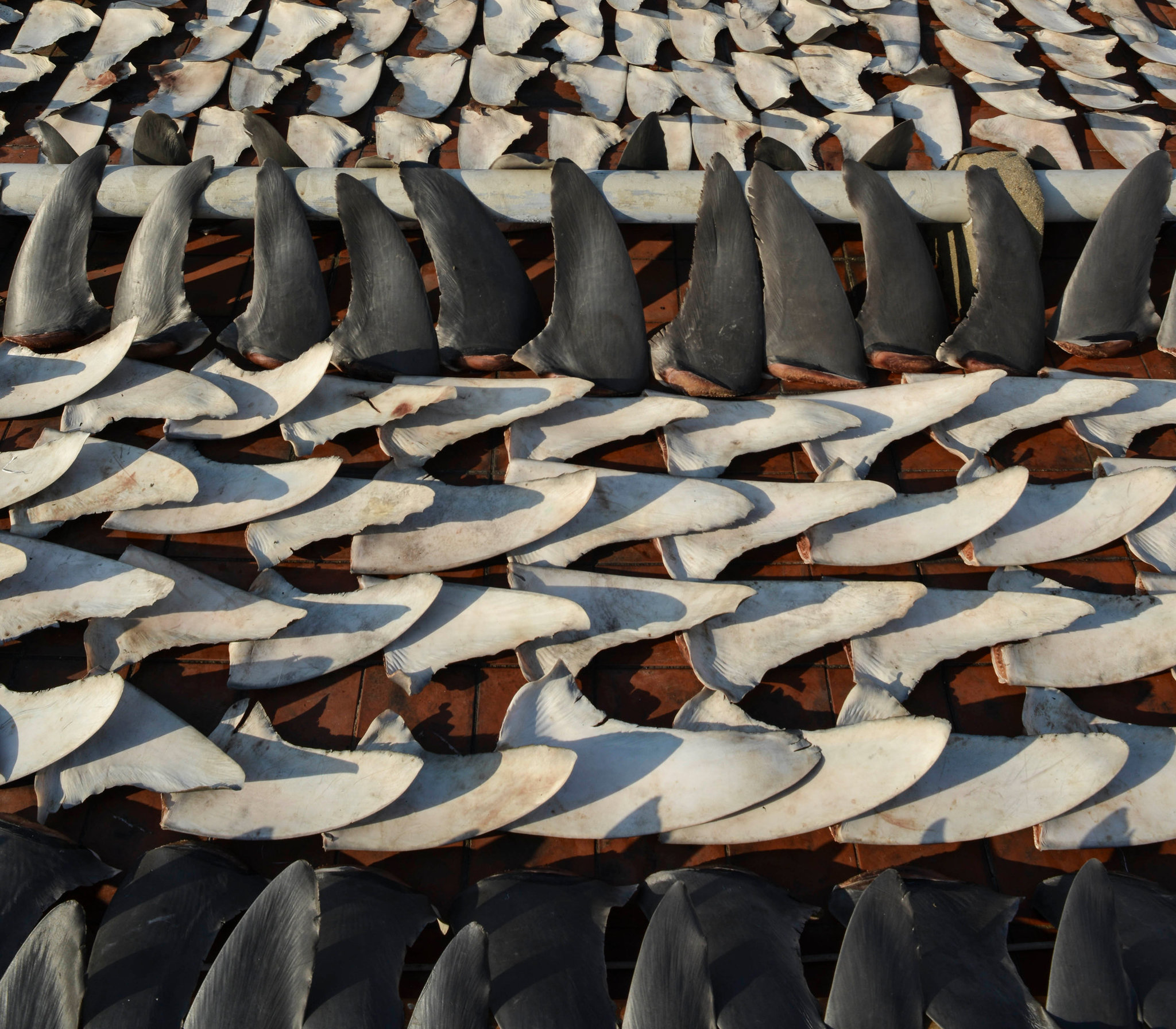About
Bull Sharks

The Bull Shark, also known as the Carcharhinus Leucas, Zambezi Shark, Nicaragua Shark, or Ganges River Shark, has a stocky figure and a broad, flat snout. They are gray in color along their backs with white underneath and sometimes have a streak of grey along their flanks as well. They are short, wide and heavy fish with a second dorsal fin about only a third of the size of their first one and a caudal fin larger and lower than other sharks of comparative size. Their small eyes make scientists believe that their eyesight is poor.
The bull shark is known as one of the top 3 sharks most likely to attack humans (the other two are the Great White Shark and the Tiger Shark). But, we also know that shark attacks are extremely rare…you are more likely to be stung by a bee or struck by lightning…but nonetheless, this shark has been nicknamed “The Pit Bull of the Sea” because of its aggressive behavior.
The bull shark is one of 43 shark species that can live in both seawater and freshwater. Most sharks have the same salt concentration in the blood as the sea water they are swimming in. This is not the case with Bull Sharks. They only have 50% of the salt concentration in their blood which makes them very special as they are able to switch from saltwater to freshwater very easily.
Bull sharks tend to stick to the shallow waters, and rarely dive lower than 30 m (100 ft) from the surface, although they have been recorded at a depth of 166 m (500 ft). The map to the left shows all the places where bull sharks have been found, and as you can see they prefer the warmer equatorial, tropical and subtropical water.
A full grown bull shark is normally no more than 11 feet (3.3 m) long and weigh approximately 500 pounds (226 kg). This is the largest they will ever get. The average female, which grows larger than the male, is about 7.8 feet (2.3 m) and weighs around 285 pounds (129 kg). The male only grows to about 7.3 feet (2.2 m) and weighs about 210 pounds (95 kg) on average.
Females reach maturity after about 10 years (which would be about 50 years old in human terms based on an 80-year lifespan). Females grow their young in the womb like humans, instead of depositing massive amounts of eggs outside of their body like many fish do. However, they are about 1-2 months longer pregnant than humans, and can carry anywhere between 1-13 baby sharks, or pups, at a time.
The bull shark’s hunting technique is known as the “bump and bite.” This means that they will typically head-butt their prey before sinking their teeth into it. The bump is an investigative technique used to help the nearly blind shark figure out what it’s about to bite.
Bull sharks are officially listed as “Vulnerable” on the IUCN (International Union for Conservation of Nature) list of threatened species.

Map National Geographics

Shark Conservation
HUMANS are the greatest danger to sharks! It is estimated that 100 million sharks are killed by people every year, due to commercial and recreational fishing.
Sharks are a common seafood in many places, however, most often, sharks are killed for shark fin soup. Fishermen capture live sharks, fin them, and dump the finless animal back into the water. Shark finning involves removing the fin with a hot metal blade. The resulting immobile shark soon dies from suffocation or predators. Shark fin has become a major trade within black markets all over the world…selling for about $300/lb. Poachers illegally fin millions each year and only a few governments enforce laws that protect them.
In Asia, shark fin soup is a status symbol and is considered healthy and full of nutrients. However, the US FDA lists sharks as one of four fish (with swordfish, king mackerel, and tilefish) whose high mercury content is hazardous to children and pregnant women.
Sharks generally reach sexual maturity only after many years and produce few offspring in comparison to other harvested fish. Harvesting sharks before they reproduce severely impacts future populations.
The majority of shark fisheries have little monitoring or management. The rise in demand for shark products increases pressure on fisheries. Major declines in shark stocks have been recorded—some species have been depleted by over 90% over the past 20–30 years with population declines of 70% not unusual. Many governments and the UN have acknowledged the need for shark fisheries management, but little progress has been made due to their low economic value, the small volumes of products produced, and the sharks’ poor public image.
Sharks Need Our Help!
Sharks have been in our ocean for over 400 million years. They are fascinating and diverse animals. Nowadays, however, the survival of many species is in danger. This extinction crisis needs to be stopped because a world without sharks would have serious consequences for marine and freshwater ecosystems.
The future of sharks is in our hands! Please donate to help achieve the required positive changes to safeguard these awesome animals.
Further, to learn more about sharks and their vital role in the marine ecosystem by visiting the Shark Research Institute whose primary goal is to creating value for sharks as sustainable natural resources for the dive industry, particularly in developing countries. By so doing, a steady revenue stream is also generated for local fishers that might otherwise slaughter the sharks for immediate gain.
The short movies below, one trailer from the award winning documentary “Sharks in Deep Trouble” by filmmaker and shark conservationist Lesley Rochat is an indicative of the global plight of sharks, and the other one “The Tide is Turning” by HKSharkFoundation, highligts how nations, cities, and people around the globe are saying “No to Sharkfin.”

